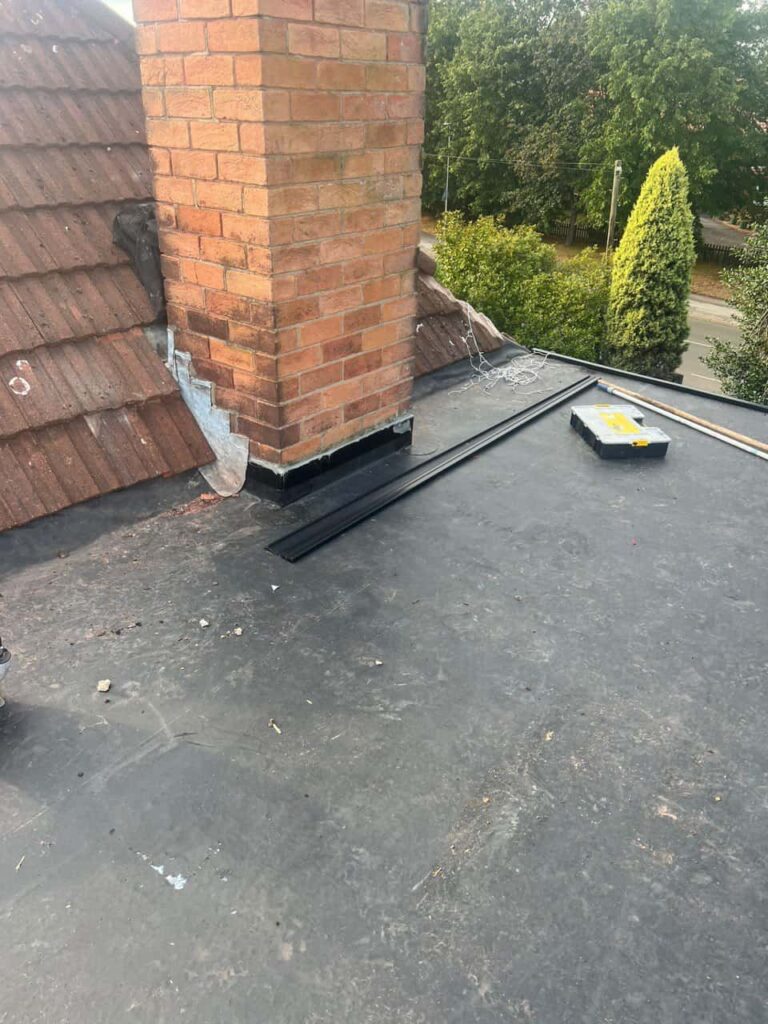Introduction: At Beeston Roofing Repairs, we understand the challenges of maintaining and repairing roofs in regions prone to heavy snowfall and ice accumulation. The winter months can stress your roofing system significantly, often leading to issues such as slipped tiles. In this blog post, we’ll provide practical tips for repairing slipped tiles in snowy and icy conditions, ensuring that your roof remains in good condition throughout winter.
Understanding the Impact of Snow and Ice on Roof Tiles
Heavy snowfall and ice can exacerbate issues with roof tiles, leading to potential damage and complications. Here’s how snow and ice affect your roof:
- Increased Weight and Pressure
- Snow Accumulation: Accumulated snow adds significant weight to the roof, which can cause tiles to shift or become dislodged if the roof structure isn’t strong enough.
- Ice Formation: Ice can form beneath tiles or in the guttering, creating pressure that can push tiles out of place.
- Freeze-Thaw Cycles
- Expanding Ice: When ice forms in cracks or gaps, it expands and contracts with temperature changes. This freeze-thaw cycle can exacerbate existing issues, causing tiles to loosen or slip.
- Water Infiltration
- Melting Snow: As snow melts, the resulting water can seep under tiles if not properly secured, leading to leaks and further damage.
Tips for Repairing Slipped Tiles in Winter Conditions
Repairing slipped tiles during winter can be challenging due to the cold weather and potential snow and ice. Here are some practical tips to help you manage repairs effectively:
- Safety First
- Avoid Working in Extreme Conditions: If possible, wait for milder weather to undertake repairs. Working on icy or snow-covered roofs can be dangerous. If repairs are urgent, use appropriate safety equipment, such as non-slip shoes and harnesses.
- Clear Snow and Ice: Before starting repairs, remove any snow or ice from the roof surface to prevent slipping and ensure a safe working environment. Use a roof rake or a broom with a long handle to avoid walking on the roof.
- Inspect and Assess the Damage
- Identify Slipped Tiles: Check for any displaced or slipped tiles and assess the extent of the damage. Look for signs of underlying issues, such as cracks or broken tiles.
- Check for Ice Dams: Inspect the eaves and gutters for ice dams, which can prevent proper drainage and contribute to roof damage. Remove ice dams carefully using a roof rake, or hire a professional if necessary.
- Repairing Slipped Tiles
- Reposition Tiles: Gently reposition slipped tiles back into place. Ensure that the underlying adhesive or fixings are intact. If the adhesive has failed, clean the area thoroughly before reapplying the new adhesive.
- Replace Damaged Tiles: If tiles are cracked or broken, replace them with new ones. Make sure to use tiles that match the existing ones in size, style, and colour.
- Secure Tiles Properly: Secure the tiles using appropriate roofing adhesive or fixings. Follow the manufacturer’s instructions for the adhesive and ensure it is suitable for winter conditions.
- Addressing Ice and Snow Accumulation
- Install Snow Guards: Consider installing snow guards to prevent excessive snow buildup and reduce the risk of tiles becoming displaced. Snow guards can help manage snow and ice on the roof, preventing it from sliding off in large amounts.
- Improve Insulation and Ventilation: Ensure your roof space is well-insulated and ventilated to minimise the risk of ice dams forming. Proper insulation helps to keep the roof surface temperature consistent, reducing the likelihood of ice buildup.
- Preventive Measures
- Regular Maintenance: Conduct regular roof inspections before and after the winter season to identify and address potential issues. This includes checking for signs of wear or damage and ensuring that tiles are secure.
- Clean Gutters: Keep gutters and downpipes clear of debris to ensure proper water flow and prevent ice dams. Regular cleaning can help prevent blockages and reduce the risk of water pooling.
- Seek Professional Assistance
- Hire Experts: If the damage is extensive or you need clarification on repairing yourself, consider hiring a professional roofing contractor. Experienced roofers can handle repairs safely and efficiently, ensuring that your roof is properly restored.
Conclusion: Repairing slipped tiles in areas with heavy snowfall and ice accumulation requires careful attention and appropriate techniques. By following these tips, you can effectively address and prevent damage, ensuring that your roof remains secure and functional throughout winter.
Call us on: 0115 647 1193
Click here to find out more about Beeston Roofing Repairs
Click here to complete our contact form and see how we can help you with your roofing needs.

